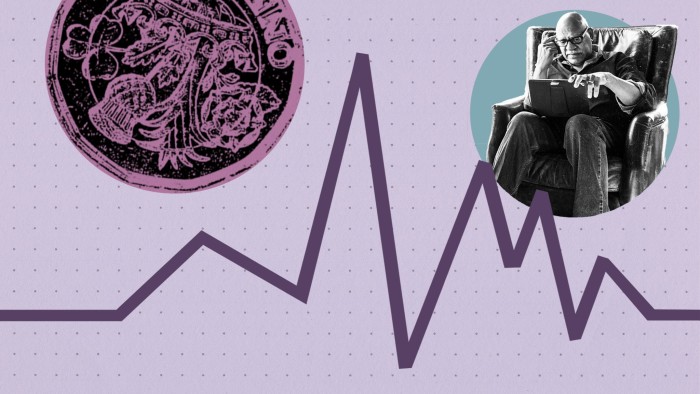Managing your investments during retirement

Roula Khalaf, Editor of the FT, selects her favourite stories in this weekly newsletter.
Before pensions freedoms arrived in April 2015, most people followed a straightforward path to generating retirement income. Either they received a regular, ready made final salary payout, or they bought an annuity that would guarantee them an income for life.
These days, while those options remain part of the big picture, growing numbers of retirees are faced with a third way — that of leaving their pension invested within a so-called income drawdown account, and taking withdrawals from it.
That’s likely to be a daunting prospect for many investors: after all, persistent bad investment choices or overambitious withdrawals could mean their pot is finished long before they are.
But some basic principles and a proper plan can make a big difference. So here we take a look at the nuts and bolts of managing investments for a sustainable income.
Gather your assets
First, in the run-up to retirement, make sure you’re looking at all your investments and old pensions, advises Emma Byron, managing director of L&G Retail Retirement.
“There are 1.6m unclaimed pensions worth an estimated £19.4bn in the UK, so use a pension tracing service if you have mislaid any from past jobs,” she says. L&G has recently launched a “no-strings” pension tracing service, or you can use the government’s free scheme.
It’s also useful to set a realistic target withdrawal rate. The longstanding rule of thumb among advisers has been that taking 4 per cent of your pot per year is sustainable through retirement — but a more flexible approach may be more desirable, particularly in times of market volatility. If you have other sources of income to cover essentials, you may not need to withdraw at such a high rate.
“Better-prepared investors understand how our changing economic environment may impact their retirement savings, and the need to be flexible,” says Simon Cahill, a partner at Octopus Wealth.
Market falls are one obvious change, but a prolonged period of high inflation, for instance, could also erode the real value of your portfolio and trigger a rethink on withdrawals.
Portfolio mix
Next, consider asset allocation. Received wisdom used to be that retirees favoured bonds for security and a fixed income. But if you plan to fund a retirement that could last 30 years plus, increasing your income over that time to protect you against long-term inflation, you will need exposure to equities as well.
What about cash? Kevin Doran, chief investment officer at AJ Bell, makes the point that “having some visibility on where your immediate income is coming from is good for reducing anxiety” and should help you stick with your investment plan, rather than panic selling if markets take a dive.
The Next Act
Doran suggests a percentage split between cash, bonds and equities of 10/45/45. Income generated from the bond and equity elements of the portfolio can be used to top up the cash bucket, “making sure the next couple of years of income are always safely tucked away in a no-risk environment”.
But as Paul Campion, a financial planner at Succession Wealth, emphasises, there is no “one size fits all” solution. Not only are people’s perceptions of risk quite different, but their wider circumstances can vary enormously. “Someone who also has a final salary pension has a lot more capacity to tolerate falls in the value of their Sipp than someone who has been self-employed all their life and has nothing else to fall back on.”
Diversify your investments
Diversification always makes sense — in terms of different regions and investment styles as well as asset classes. Such an approach, which existing investors will have been practising for decades, also means you’re less likely to end up fixated on income-producing investments.
As Campion explains: “Exposure only to income-producing stocks means you’re missing out on great opportunities in other parts of the market — technology being an obvious example in recent years.” He therefore prefers a “total return” approach, taking available “natural” yield and topping it up with the sale of equity units to the target withdrawal rate.
To get a handle on what this might look like for the equity part of your portfolio, Mick Gilligan, head of managed portfolio services at Killik, suggests a benchmark of the long-term equity risk premium, which is the excess annual return from equities over a risk-free alternative and is usually considered to be about 5 per cent above inflation.
“Investors can use this as a yardstick for using capital gains to supplement income,” he says. “If their portfolio generates a yield of 2 per cent they should still be justified in taking around 3 per cent a year in the form of capital gains while maintaining the real value of their portfolio.”
Should you use passive or actively managed funds to build your retirement portfolio? “Provided the active manager is able to generate a return that more than makes up for the extra costs of active management, holding active or passive funds for implementing the strategy is really a question of personal choice,” says Doran.
Many wealth managers are evangelical in their preference for passives, however. Cahill argues: “Time and time again, the majority of active managers have fallen short of their passive counterparts when accounting for fees. The evidence speaks for itself.” But he adds that cannier investors combine passives with tactical use of active funds in areas where they are shown to outperform — smaller companies being one example.
A helping hand
Finally, there’s the big question of financial advice: does it make sense at retirement? Doran says the evidence suggests that it can be worthwhile. “Investors who use an adviser are more likely to stick to the original plan in times of market distress,” he notes. “For people who are likely to leave a legacy to the next generation, financial advisers are well-placed to advise on how to do that in a tax-efficient manner.”
So retirement is perhaps a key time to invest in professional input, particularly if there are other assets such as property, a final salary pension, Isas or an inheritance in your broader retirement picture.
Faith Glasgow is a freelance journalist and the former editor of Money Observer. Twitter: @faithglasgow

Comments